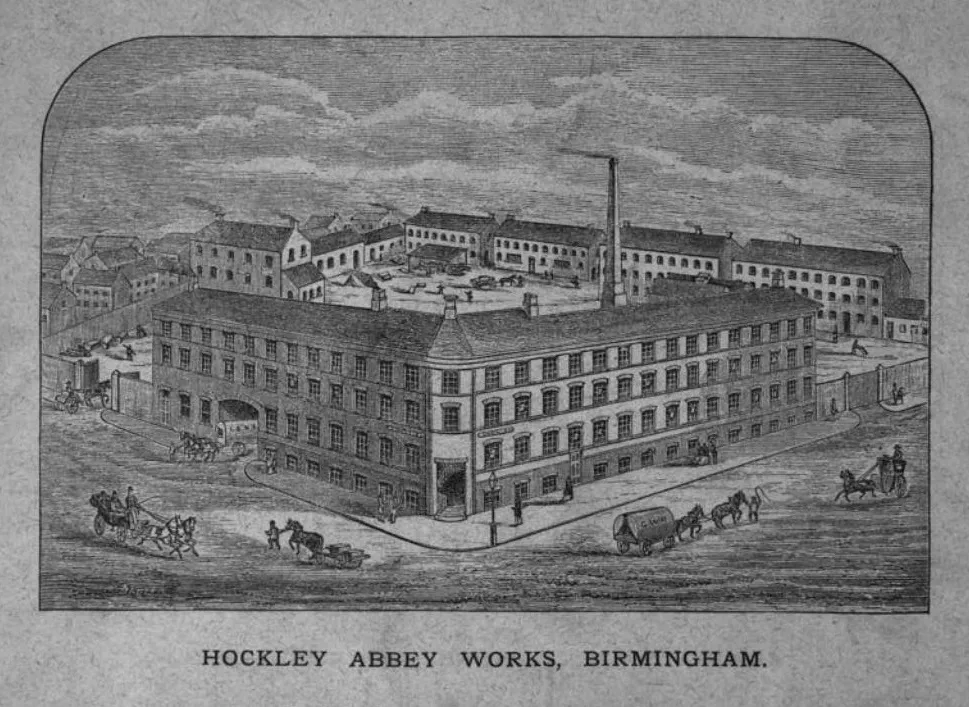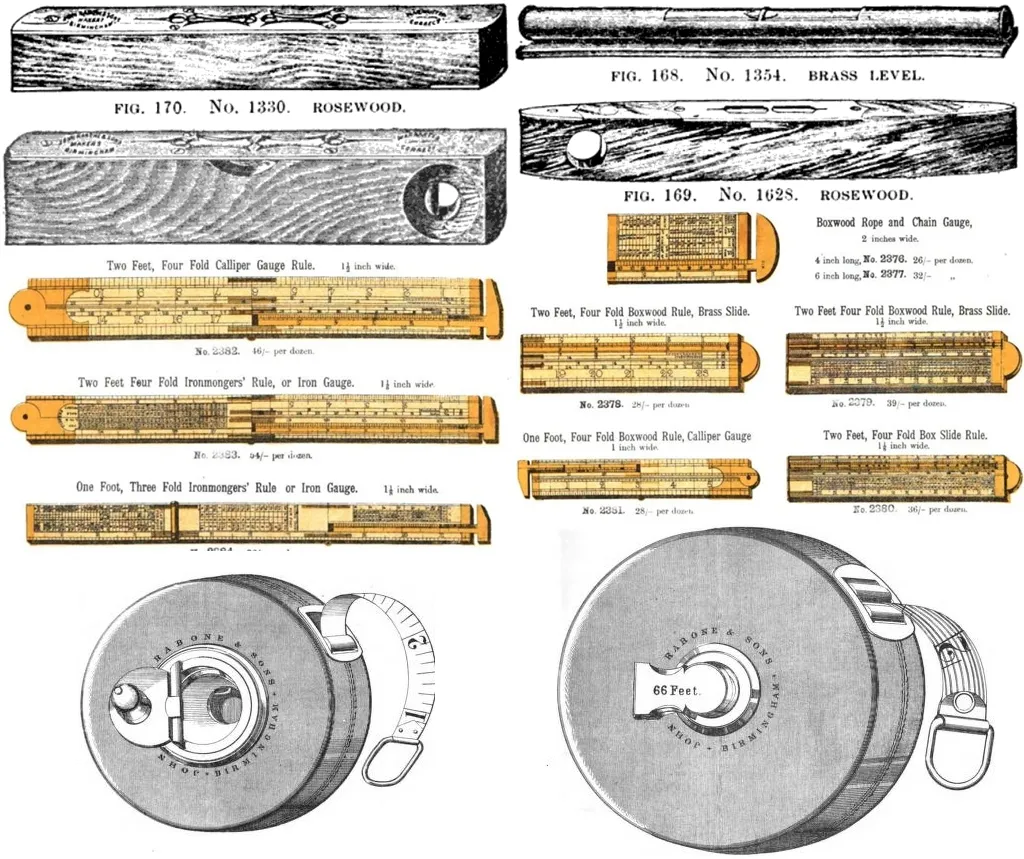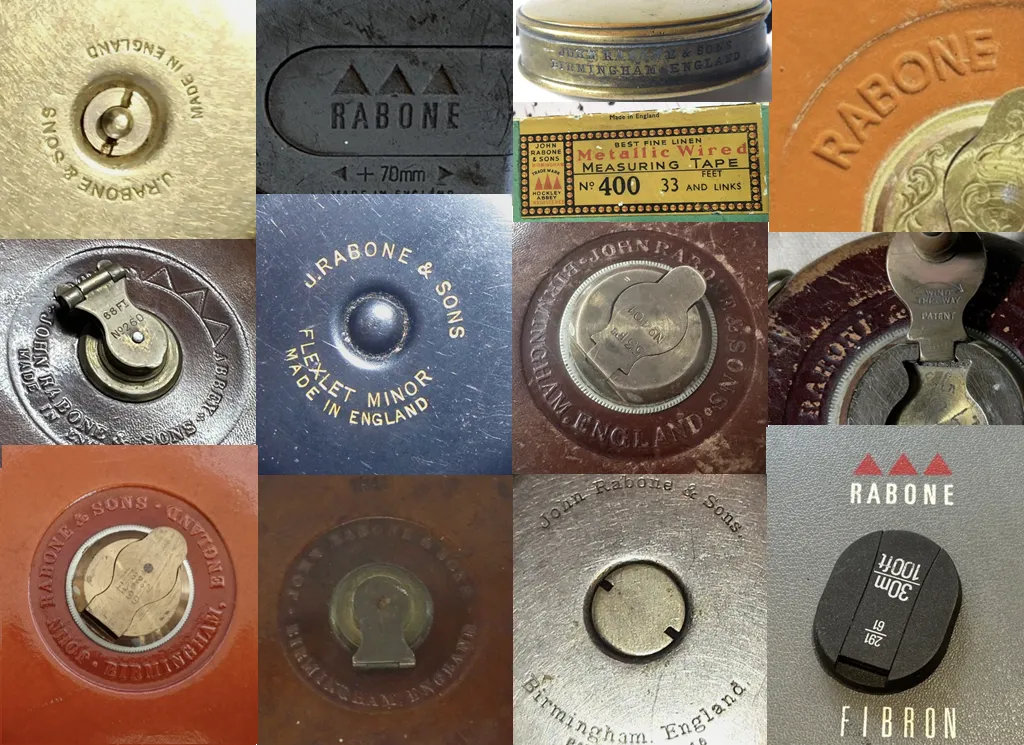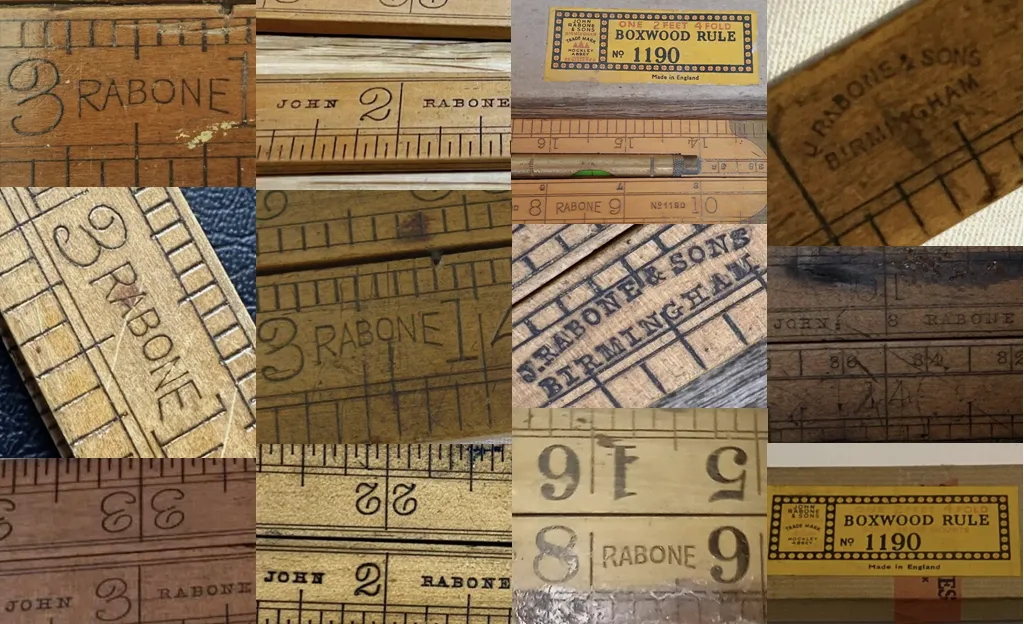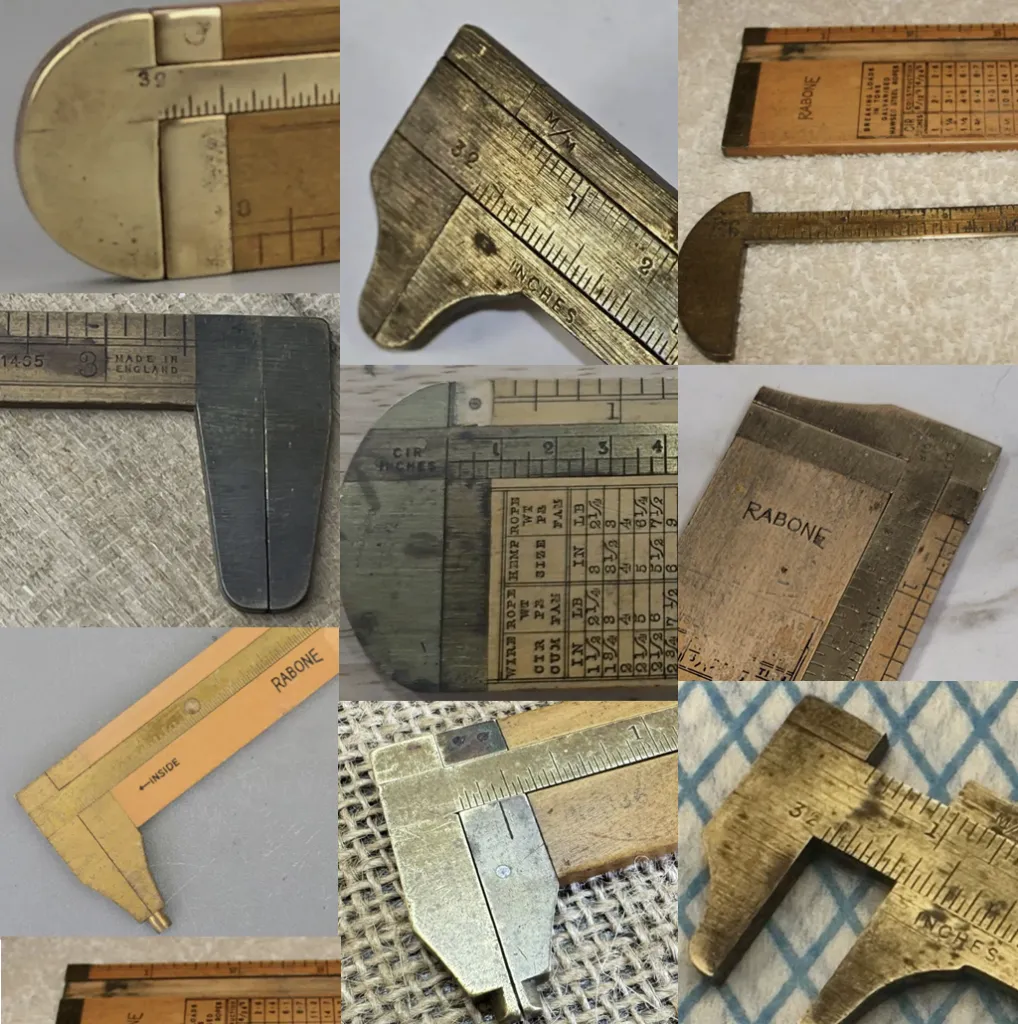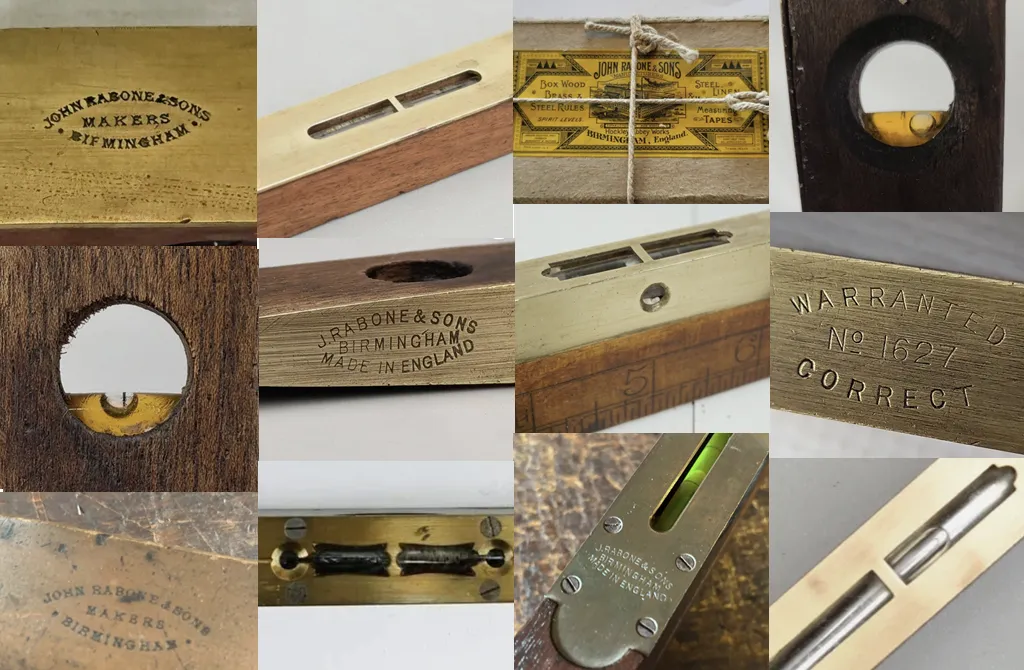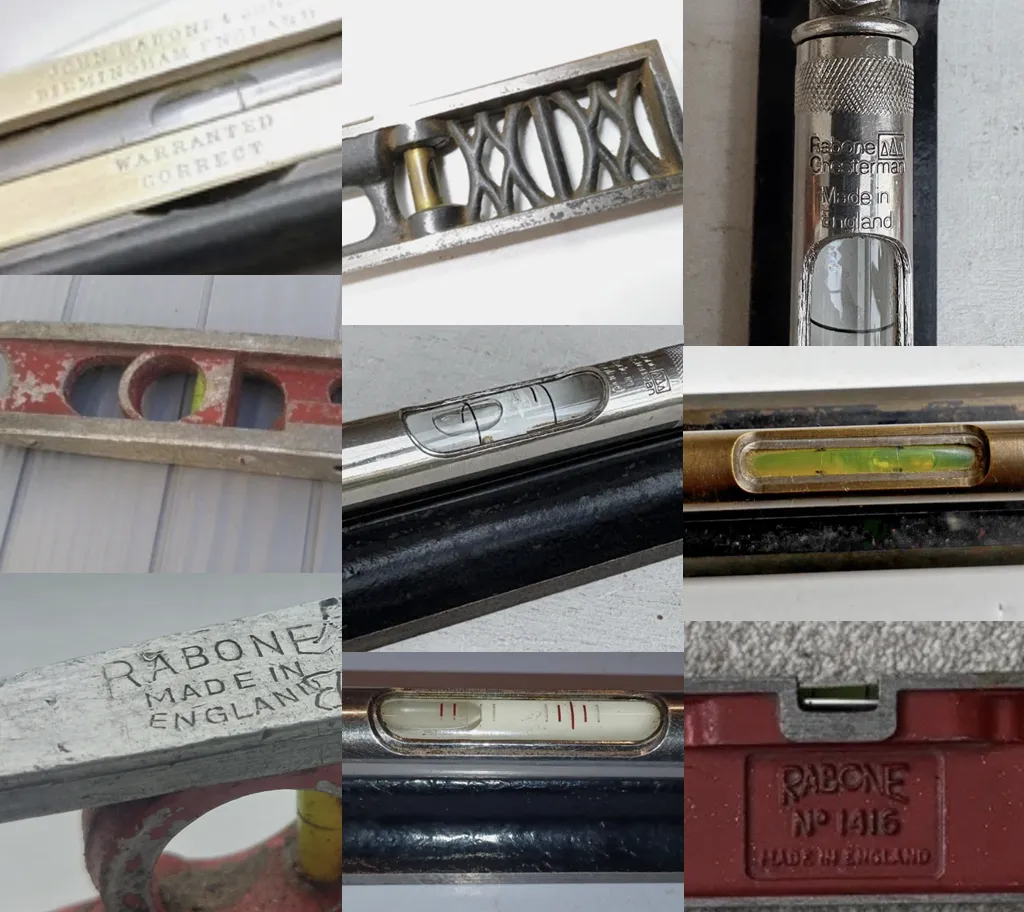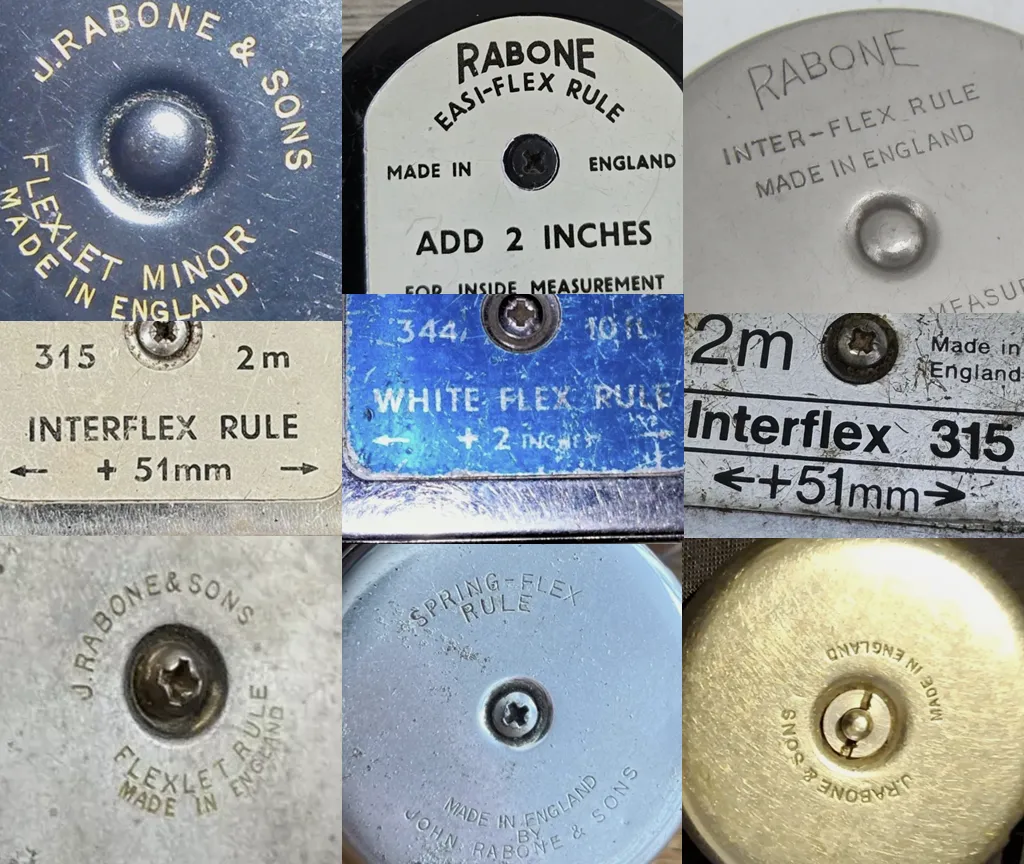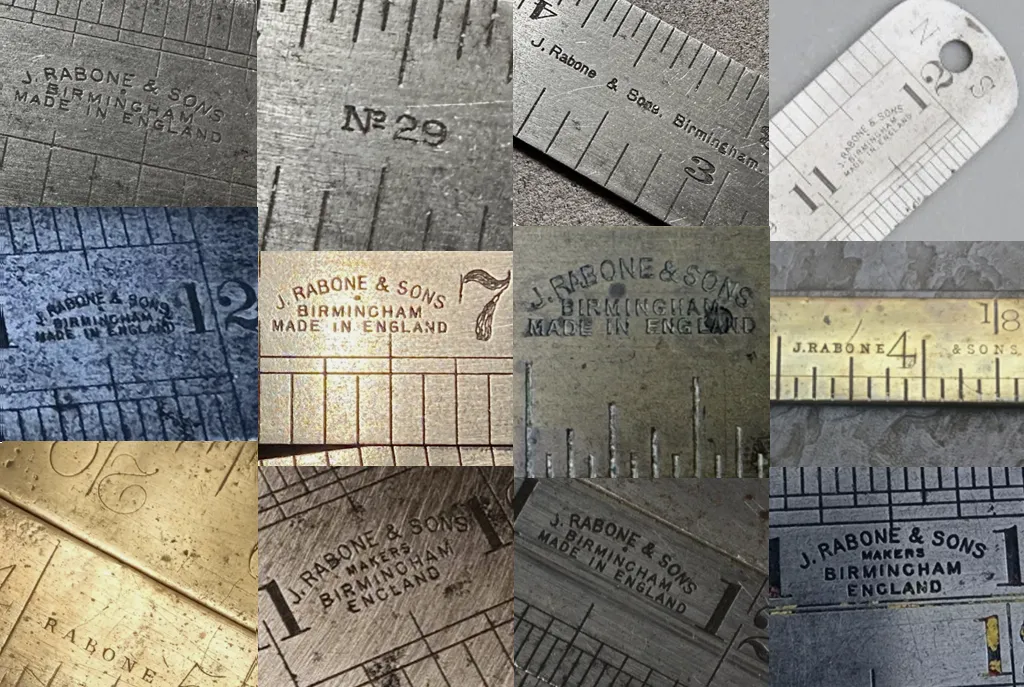John Rabone Tee Squares, Laths and Bench Rules
Rabone made folding laths, tee squares, bench rules, and combination squares for trade use.
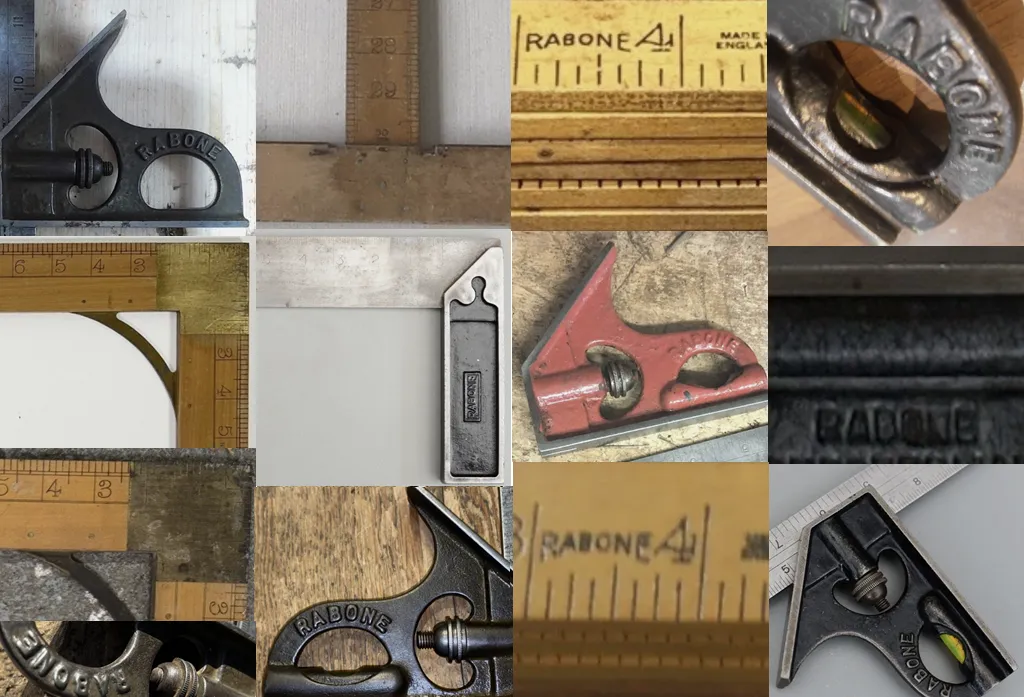
Source: by Stable MARK - own work.
Includes original catalog images, technical details, and model numbers for Rabone folding laths, tee squares, bench rules, and combination squares — with notes on sizes, markings, and historical use.
Table of Contents
John Rabone Carpenters’ Square No. 1908John Rabone Combination Square No. 1902John Rabone Surveyors' Folding Boxwood Lath Marked on Both Sides No. 1530John Rabone Straignt Boxwood Bench Rule No. 1138John Rabone Straignt Boxwood Bench Rule No. 1139John Rabone Glaziers' Tee Square No. 1147John Rabone Carpenters’ Square No. 1908
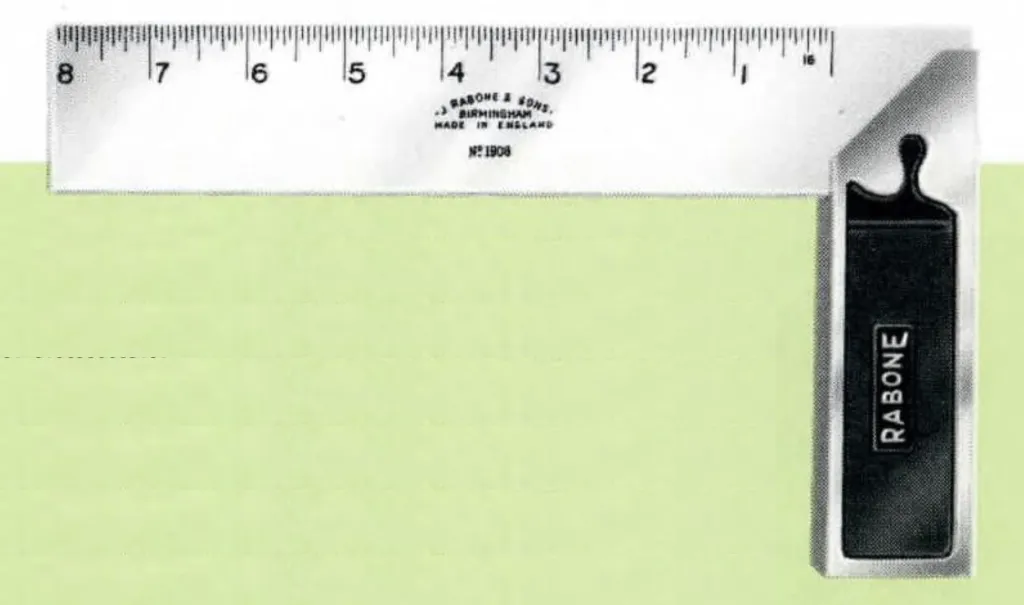
Source: Internet Archive
Rabone No. 1908 Try and Mitre Squares were produced in England during the mid-20th century, with blades marked in inches divided into 16ths. The cast iron stock was stove enamelled and ground for precision, providing a reliable 90° and 45° reference. Models were manufactured in lengths ranging from 4 to 12 inches. Variant No. 1909 included metric graduations on one side, reflecting the increasing adoption of metrication during the postwar decades.







Vintage Rabone Chesterman Square 8", No 1908, very clear markings, Made in UK
(original price: 15.00 GBP)
(1396) 100.00% positive
See More Still curious? Click here to see John Rabone Spirit Levels and Plumbs and John Rabone Aluminium and Cast Iron Spirit Levels for Engineers.
John Rabone Combination Square No. 1902
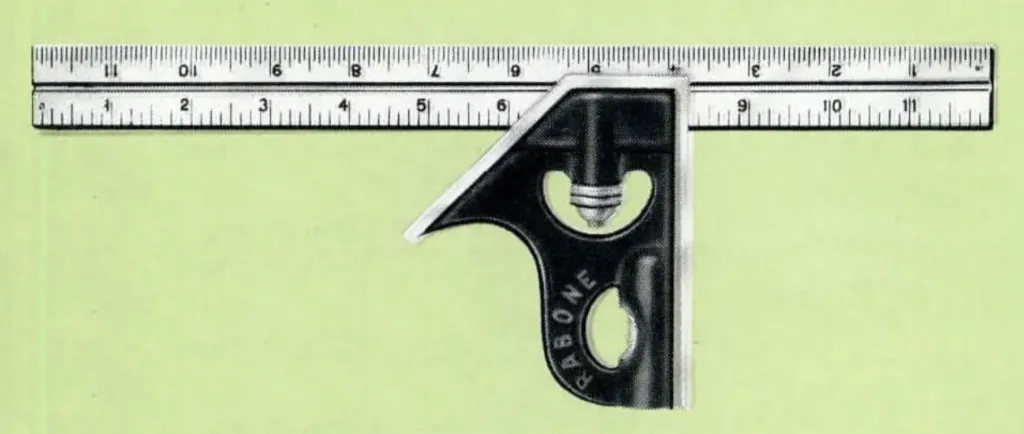
Source: Internet Archive
The Rabone No. 1902 combination square was produced in several sizes from 6 to 12 inches and included a cast iron stock with integrated spirit level. The tool combined functions of try and mitre square, depth gauge, height gauge, marking gauge, and rule. Its rule was machine-divided and marked in 8ths and 16ths of an inch on both sides. Metric-marked variants, such as No. 1912, appeared as metrication progressed in British industry during the late 20th century.







Vintage J Rabone No 1902 Combination Square 12"
(original price: 24.99 GBP)
(30221) 100.00% positive
See More Still curious? Click here to see John Rabone Folding Boxwood Rules or see John Rabone and Sons Pocket Measure Rules.
John Rabone Surveyors' Folding Boxwood Lath Marked on Both Sides No. 1530

Source: Internet Archive
Rabone folding boxwood laths, such as No. 1530 and No. 1531, were produced in 5- and 6-foot lengths and folded into 5 or 6 sections. They were made from seasoned boxwood, measuring ⅞ inch wide and 3⁄16 inch thick. The black enamelled versions featured white markings in feet, inches, and eighths on both sides. Natural-finish variants, Nos. 1612 and 1613, offered the same scale in a clear boxwood finish. These were used primarily by surveyors and engineers in the mid-20th century.







Vintage Rabone 5 Foot Ebonised Wood Folding Zig-Zag Rule No 1530 Made in England
(original price: 14.99 GBP)
(2163) 99.70% positive
See More Still curious? Click here to see John Rabone Boxwood and Brass Calliper Gauges.
John Rabone Straignt Boxwood Bench Rule No. 1138

Source: Internet Archive
Rabone straight boxwood bench rules, including No. 1138 and No. 1504, were produced in 24- and 36-inch lengths. They were made of seasoned boxwood, 1 inch wide and 1⁄8 inch thick. No. 1138 was marked in inches divided into eighths on both sides. Model No. 1504 featured inch divisions on one side and yard subdivisions on the reverse, reflecting usage in both fine bench work and general measurement tasks in woodworking shops.







Bins Rabone No. 1138 Wood Ruler 36" 1 Yard for Cloth & Wood
(original price: 24.99 GBP)
(11703) 99.50% positive
See More Still curious? Click here to see John Rabone Tape Measures or here to see John Rabone Machine Divided Steel Rules.
John Rabone Straignt Boxwood Bench Rule No. 1139

Source: Internet Archive
Rabone No. 1139 bench rules were produced in lengths from 24 to 72 inches. They were made of boxwood, 1½ inches wide and ¼ inch thick. Each rule was marked with three parallel lines of inch divisions in eighths and numbered from both ends. This dual-orientation design improved usability for joiners and machinists who required fast reference from either direction on the bench.




Vintage Wooden Rabone 1139 Wooden Folding Ruler/measuring Stick Wood Working
(original price: 14.95 GBP)
(1286) 99.20% positive
See More Still curious? Click here to see more John Rabone Tools.
John Rabone Glaziers' Tee Square No. 1147
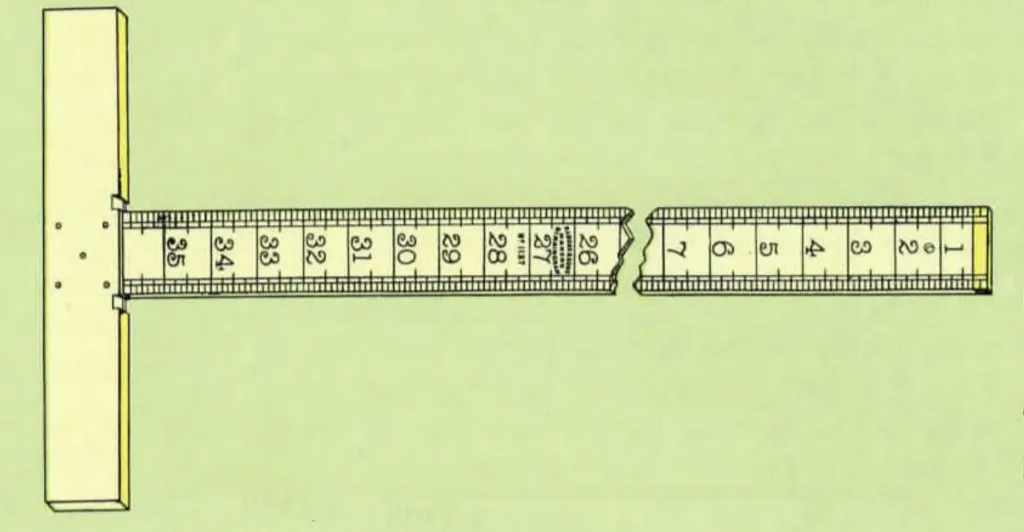
Source: Internet Archive
Rabone glaziers’ tee squares, models No. 1137 and No. 1147, were manufactured in lengths from 24 to 72 inches. They were made of boxwood, 1¾ inches wide and ¼ inch thick, with measurements in inches marked in eighths. The No. 1147 variant featured a brass-bound stock for improved durability. These tee squares were used primarily in glazing and sheet material layout, offering accurate 90° reference over long distances.





(original price: 21.48 GBP)
(882) 99.40% positive
Learn More Still curious? Click here to learn about the The History and the Legacy of John Rabone & Sons.
Share this article
